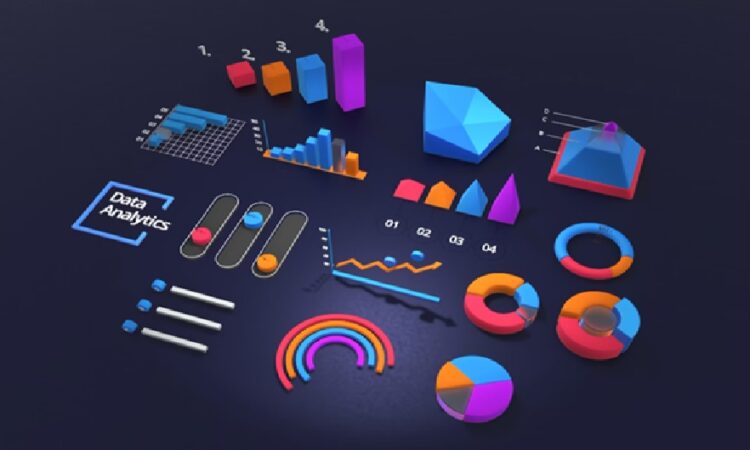
Data analytics is a fast-growing field that focuses on collecting, processing, and interpreting data to help businesses and organizations make informed decisions. If you’re considering a career in data analytics, choosing the right degree program is an important step. With many options available, it can be challenging to know which one best suits your goals, interests, and budget. This guide will walk you through the key factors to consider when selecting a data analytics degree program.
1. Understanding the Different Types of Degrees
Before choosing a Data analytics degree program, it’s essential to understand the different levels of education available in data analytics:
- Certificate and Diploma Programs – Short-term courses that provide fundamental knowledge in data analytics. These are great for beginners or professionals looking to upskill.
- Associate Degree – A two-year program covering the basics of data analysis, programming, and statistics. This is a good starting point for entry-level jobs.
- Bachelor’s Degree – A four-year program that provides a well-rounded education in data analytics, including advanced techniques and tools.
- Master’s Degree – A specialized program that focuses on deep analytical skills, data science, and business intelligence. This is ideal for those looking to advance their careers or switch to a high-level analytics role.
- Ph.D. in Data Analytics – A research-based program designed for those who want to work in academia or lead complex analytical projects.
Each level offers different career opportunities, so it’s important to align your choice with your career goals.
2. Examining the Curriculum and Specializations
The curriculum is a crucial aspect of any degree program. A strong data analytics program should cover topics like:
- Statistics and Probability – Understanding data patterns and making predictions.
- Programming – Learning languages like Python, R, and SQL for data manipulation.
- Machine Learning and AI – Applying algorithms to analyze large data sets.
- Data Visualization – Using tools like Tableau, Power BI, or Excel to present insights effectively.
- Big Data and Cloud Computing – Handling large-scale data storage and processing.
- Business Intelligence – Learning how to apply data analytics in real-world business scenarios.
Some programs also offer specializations in areas like healthcare analytics, financial analytics, or marketing analytics, which can help you focus on a specific industry.
3. Accreditation and Reputation of the Program
Accreditation ensures that the program meets educational standards and is recognized by employers. Look for programs accredited by recognized organizations, such as:
- ABET (Accreditation Board for Engineering and Technology)
- AACSB (Association to Advance Collegiate Schools of Business)
- Regional accrediting bodies (such as Middle States Commission on Higher Education)
Additionally, consider the program’s reputation by checking:
- University rankings and reviews.
- Faculty qualifications and industry experience.
- Alumni success stories and job placement rates.
4. Flexibility and Learning Format

Data analytics programs come in various formats to accommodate different learning styles and schedules:
- On-campus Programs – Traditional, in-person learning with direct access to faculty and campus resources.
- Online Programs – Ideal for working professionals or those who prefer a flexible learning schedule.
- Hybrid Programs – A mix of online and in-person classes, providing both flexibility and interaction.
Some programs also offer full-time, part-time, and accelerated options to fit your availability and career goals.
5. Cost and Financial Aid Options
The cost of a data analytics degree can vary depending on the institution and program format. Consider:
- Tuition Fees – Public universities are generally more affordable than private institutions.
- Scholarships and Grants – Many schools offer financial aid based on merit or need.
- Employer Sponsorships – Some companies offer tuition assistance for employees looking to enhance their skills.
- Return on Investment (ROI) – Research the average salaries of graduates from your chosen program to determine if the investment is worthwhile.
6. Career Support and Job Placement
A good data analytics program should provide strong career support, including:
- Internship Opportunities – Hands-on experience with real data projects.
- Industry Partnerships – Collaborations with companies that offer job opportunities.
- Career Services – Resume reviews, interview preparation, and job placement assistance.
- Networking Events – Conferences, workshops, and mentorship programs that connect students with industry professionals.
7. Support and Learning Resources
Having access to the right resources can enhance your learning experience. Look for programs that offer:
- State-of-the-art Computer Labs – Equipped with the latest data analytics software.
- Online Learning Platforms – Interactive courses and tutorials.
- Access to Industry Tools – Hands-on experience with Tableau, SQL, Python, and cloud platforms.
- Tutoring and Mentorship Programs – Additional support for challenging subjects.
8. Real-World Experience and Portfolio Building
Employers value practical experience. Choose a program that allows you to:
- Work on real-world projects using real datasets.
- Participate in hackathons and data challenges.
- Build a portfolio showcasing your projects and skills.
Final Thoughts
Choosing the right data analytics degree program requires careful consideration of your career goals, learning preferences, and financial situation. By evaluating factors such as curriculum, accreditation, cost, flexibility, and career support, you can find a program that sets you up for success in this high-demand field.
If you’re unsure where to start, consider taking free online courses in data analytics to explore your interest before committing to a degree program. No matter which path you choose, continuous learning and hands-on experience will be key to your success in data analytics.




